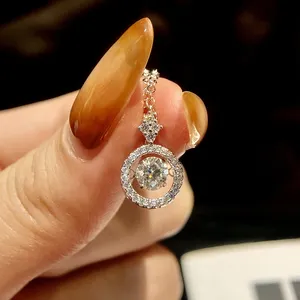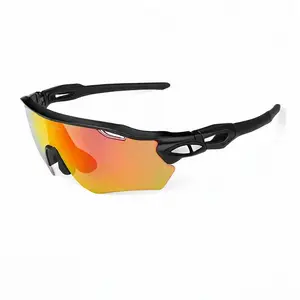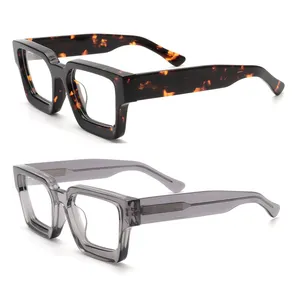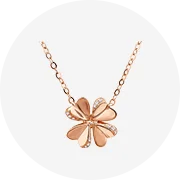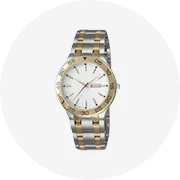Phổ biến trong ngành của bạn





Chân hoạt động rửa tay bồn rửa chén lưu vực thép không gỉ chân y học bồn rửa
148,12 US$ - 153,89 US$
Đơn hàng tối thiểu: 1 Mẫu Anh







Thủ công bê tông lưu vực mạnh mẽ phòng tắm bồn rửa Countertop xi măng tàu lưu vực gắn rửa bê tông lưu vực
29,45 US$ - 35,00 US$
Đơn hàng tối thiểu: 2 Cái





Quảng Châu nhà máy tùy chỉnh treo tường cảm ứng của nhãn hiệu rửa tay bồn rửa Bệnh Viện Phẫu Thuật Chà Bồn rửa để bán
400,00 US$ - 600,00 US$
Đơn hàng tối thiểu: 2 Cái



Phụ Kiện Bồn Rửa Nhà Bếp Giỏ Lọc Bằng Thép Không Gỉ Giỏ Bồn Rửa Kiểu Mỹ Phổ Biến Hỗ Trợ Tùy Chỉnh
1,90 US$ - 2,00 US$
Đơn hàng tối thiểu: 50 Cái






Cao cấp khách sạn nhà vệ sinh truy cập lưu vực trên công cộng phòng tắm gốm tay bồn rửa phòng tắm Phong Cách Châu Âu Countertop rửa lưu vực
12,00 US$ - 15,00 US$
Đơn hàng tối thiểu: 10 Cái
Vận chuyển mỗi chiếc: 78,16 US$







Giá rẻ Giá 2 Tier Đen món ăn khô giá rửa lưu vực món ăn drainer kệ
15,00 US$ - 20,00 US$
Đơn hàng tối thiểu: 30 Cái

Dụng Cụ Vệ Sinh Bằng Sứ Với Đĩa Xà Phòng Giá Chậu Rửa Treo Tường Hình Vuông
20,00 US$ - 25,00 US$
Đơn hàng tối thiểu: 10 Cái






Bồn rửa nhà bếp N pose hình vuông món ăn rửa lưu vực giá xách tay
3,16 US$ - 3,46 US$
Đơn hàng tối thiểu: 40 Cái





Bán Buôn Giá Tốt Nhất Châu Âu Thiết Kế Độc Đáo Một Mảnh Bệ Lưu Vực
32,00 US$ - 40,00 US$
Đơn hàng tối thiểu: 2 Cái






Giá Rẻ Hơn Thép Không Gỉ Bát Lớn Lưu Vực Châu Phi Chậu Rửa Với Hoa Văn
Sẵn sàng vận chuyển
1,19 US$ - 6,45 US$
Đơn hàng tối thiểu: 200 Cái
Vận chuyển mỗi chiếc: 13,95 US$






Gốm dưới counter phòng thí nghiệm tay nhà vệ sinh chậu rửa mặt
9,00 US$ - 15,00 US$
Đơn hàng tối thiểu: 50 Bộ






Thái hiện đại massage xách tay dầu gội Bát Salon đồ nội thất tóc rửa Giường Phụ kiện điện thoại di động miễn phí nước dầu gội lưu vực
228,00 US$ - 278,00 US$
Đơn hàng tối thiểu: 2 Cái
Vận chuyển mỗi chiếc: 6.500,00 US$
Các tìm kiếm liên quan:
chậu rửa bát đĩa13 chậu rửabình thường rửa chậu kích thướcchậu rửa trung đôngchậu rửa màuchậu rửa tích hợp nhà vệ sinhchậu rửa di độnghóa chất chống lại phòng thí nghiệm rửa lưu vựcchậu rửa hình vuôngchậu rửa kháng hóa chấtchậu rửa trònchậu rửa polymerbồn rửa đôi pvcchậu rửa phòng tắm bồn rửachậu rửa bằng nhựa






Sản Phẩm Thiết Bị Vệ Sinh Bằng Sứ Giá Rẻ Chất Lượng Xuất Khẩu Chậu Rửa Bệ Sen Thương Hiệu Trực Tiếp Từ Nhà Máy Ấn Độ
8,65 US$ - 15,75 US$
Đơn hàng tối thiểu: 10 Bộ






Bồn Rửa Chén Đơn Hướng Dẫn Sử Dụng Bồn Rửa Chén Lớn Bằng Thép Không Gỉ 304 Bồn Rửa Nano Với Phần Còn Lại Của Dao
103,00 US$ - 113,00 US$
Đơn hàng tối thiểu: 30 Cái






Nhà Bếp Nano Bồn Rửa Nhỏ Thủ Công Bằng Thép Không Gỉ 304, Bồn Đơn, Bồn Rửa Bát Đĩa Cỡ Nhỏ Sản Xuất Tại Trung Quốc
30,84 US$ - 50,77 US$
Đơn hàng tối thiểu: 10 Bộ






Bồn Rửa Gấp Gọn Bồn Rửa Em Bé Bồn Rửa Du Lịch Gấp Gọn Bằng Nhựa Bồn Tắm Di Động Bồn Rửa Tay
1,75 US$ - 1,99 US$
Đơn hàng tối thiểu: 1000 Cái






Bồn Rửa Thương Mại/Bồn Rửa Nhà Bếp Tiện Dụng/Bồn Rửa Chậu Rửa Giá Bồn Rửa Bằng Thép Không Gỉ Hỗ Trợ Bằng Thép Không Gỉ
69,90 US$
Đơn hàng tối thiểu: 2 Cái






Nghệ thuật lưu vực Top Tay rửa bồn rửa bát gốm rửa lưu vực giá trong Bangladesh
11,50 US$ - 17,00 US$
Đơn hàng tối thiểu: 10 Bộ
Vận chuyển mỗi chiếc: 58,54 US$






Hộ gia đình duy nhất Tank nhà bếp duy nhất-cơ thể chải 304 thép không gỉ rửa chén lưu vực kích thước nhỏ chìm món ăn rửa lưu vực
45,00 US$ - 49,00 US$
Đơn hàng tối thiểu: 50 Cái






Lavabo Pliabl Bát Rửa Chân Tóc Gấp Gọn Dễ Mang Đi Gấp Gọn Được Bát Ngâm Ngâm Ngâm Nước Bồn Tắm Chậu Rửa
0,74 US$ - 1,25 US$
Đơn hàng tối thiểu: 100 Cái






Jieyang lebo Tùy Chỉnh Công Suất Lớn 32/34/36/38 Cm Đường Kính Giá Cả Cạnh Tranh Mặt Tay Rửa Chân Lưu Vực Nhựa Lưu Vực
0,42 US$ - 3,00 US$
Đơn hàng tối thiểu: 300 Cái
Vận chuyển mỗi chiếc: 11,17 US$






Phong cách Hiện đại giá cả cạnh tranh Trung Quốc nhà máy bán hàng trực tiếp thép không gỉ handmade rửa lưu vực
20,78 US$ - 28,50 US$
Đơn hàng tối thiểu: 50 Cái






Nhựa bát rửa lưu vực trong màu xanh đa màu sắc chỉ lưu vực gỗ & nhựa Bát trực tuyến tại giá tốt nhất tùy chỉnh kích thước Made in Ấn Độ
5,50 US$ - 15,50 US$
Đơn hàng tối thiểu: 100 Cái






Câu chuyện cổ tích lụa trắng compote khay thủy tinh trái cây tấm bát rửa tay lưu vực với giá rẻ
50,14 US$ - 114,00 US$
Đơn hàng tối thiểu: 4 Cái






HP Nano nhà bếp 304 thép không gỉ handmade bồn rửa nhỏ, bể duy nhất, mini kích thước nhỏ món ăn lưu vực Sản xuất tại Trung Quốc
75,00 US$ - 85,00 US$
Đơn hàng tối thiểu: 5 Cái






Bồn Rửa Chén Hình Vuông Giá Rẻ Bồn Rửa Bát Đơn Sâu Bồn Rửa Nhà Bếp Bằng Thép Không Gỉ Hình Tròn Bằng Kim Loại Hình Chữ Nhật 304
8,00 US$ - 9,50 US$
Đơn hàng tối thiểu: 100 Cái






Đĩa Đựng Xà Phòng Bồn Tắm Kim Loại Màu Xám Sương Mù Để Trang Trí Chậu Rửa Thiết Kế Thanh Lịch Giá Đựng Xà Phòng Chất Lượng Hàng Đầu Đĩa Màu Xám
2,00 US$ - 8,00 US$
Đơn hàng tối thiểu: 500 Cái






Bồn Rửa Tay Dài Bằng Thép Không Gỉ Cho Nhà Bếp Nhà Máy Bồn Rửa Công Nghiệp Tiện Dụng Bằng Thép Không Gỉ Giá Đứng
120,00 US$ - 200,00 US$
Đơn hàng tối thiểu: 5 Cái


Bồn Rửa Tay Hình Tròn Có Nắp Đậy Cho Nhà Bếp Với Giá Bán Buôn Bồn Rửa Mặt Bàn Dạng Vòm Có Nắp Đậy Bằng Thép Không Gỉ
1,00 US$
Đơn hàng tối thiểu: 3000 Cái






Chất Lượng Tốt Đồng Thau Mạ Chrome Lưu Vực Vòi Nước Và Ban Công Ngoài Trời Rửa Tap
Sẵn sàng vận chuyển
1,59 US$ - 1,78 US$
Đơn hàng tối thiểu: 20 Bộ
Vận chuyển mỗi chiếc: 2,70 US$






Triều châu thiết bị vệ sinh trắng gốm tường treo rửa tay lưu vực bồn rửa chén với món ăn xà phòng cho phòng tắm
30,00 US$ - 50,00 US$
Đơn hàng tối thiểu: 5 Bộ
Vận chuyển mỗi chiếc: 1.000,00 US$






Nhà Máy Giá tùy chỉnh rửa món ăn lưu vực giỏ drainer với ống linh hoạt cho bát đôi Bồn Rửa Nhà Bếp Siphon
3,00 US$
Đơn hàng tối thiểu: 100 Cái






Nổi bồn rửa SUS304 thép không gỉ rửa lưu vực lớn duy nhất bồn rửa dưới lưu vực hẹp cạnh bồn rửa nhà bếp
125,24 US$
Đơn hàng tối thiểu: 2 Bộ
Vận chuyển mỗi chiếc: 23,73 US$






Phụ Kiện Giữ Xà Phòng Bằng Nhựa Thông Dụng Miếng Bọt Biển Để Xà Phòng Màu Tùy Chỉnh Chậu Rửa Nhà Bếp Có Giảm Giá
3,66 US$ - 5,25 US$
Đơn hàng tối thiểu: 100 Cái






Heavybao Nhiệm Vụ Nặng Nề Thép Không Gỉ 304 Bồn Rửa Nhà Bếp Đôi Bát Truy Cập Hàng Đầu Lưu Vực Top Núi Món Ăn Rửa Bồn Rửa Cho Nhà Hàng
60,00 US$ - 211,00 US$
Đơn hàng tối thiểu: 10 Cái






Thép không gỉ đôi xà phòng chủ cho phòng tắm xà phòng trường hợp/xà phòng món ăn treo tường rửa lưu vực phụ kiện phòng tắm ở mức giá tốt nhất
4,50 US$ - 7,00 US$
Đơn hàng tối thiểu: 100 Cái






Bộ Lọc Thoát Nước Sàn Bằng Thép Không Gỉ 201 Đục Lỗ Cạnh Rộng 7/9/11Cm Giá Nhà Máy Phụ Kiện Bồn Rửa Chén Nhà Bếp
0,32 US$ - 0,48 US$
Đơn hàng tối thiểu: 1 Cái






3400/4500/5500W ngay lập tức tắm tankless Mini Máy nước nóng điện cho nhà bếp rửa lưu vực sử dụng
21,00 US$ - 23,00 US$
Đơn hàng tối thiểu: 1000 Cái


Nhà Máy Giá Salon Bồn Rửa Cống Chúng Tôi Tiêu Chuẩn Dầu Gội Drainer Thải Cắm Lưu Vực Lọc Drainer X-612G
3,00 US$ - 6,00 US$
Đơn hàng tối thiểu: 200 Cái






Giá bán buôn Trái Cây Rau colander với nắp Nursery chai khô giá món ăn Bát Lọc Hộp Bánh Mì Chống giỏ
2,15 US$ - 2,45 US$
Đơn hàng tối thiểu: 30 Cái
Vận chuyển mỗi chiếc: 9,99 US$
Các danh mục hàng đầu
Giới thiệu về giá chậu rửa chén
Alibaba.com cung cấp các sản phẩm 134 giá chậu rửa chén. Có rất nhiều giá chậu rửa chén lựa chọn dành cho bạn, chẳng hạn như lưu trữ, chủ, và tấm. Bạn cũng có thể chọn từ kim loại, thép, và thép không gỉ giá chậu rửa chén. Cũng như từ bền vững, đa chức năng, và thả giá chậu rửa chén.Và bất kể giá chậu rửa chén là nhà bếp, khách sạn, hay thương mại.
